This month’s briefing has a different format in line with NHS pre-election guidance and Cabinet Office guidance for the 2024 General Election. This briefing draws on official statistics published here.
Urgent and emergency care
In May, there were 2,416,292 attendances in A&Es across England, an average of 77,945 per day. This is almost 5% higher than April’s daily average and 7.6% higher than May 2023.
74.0% of patients attending A&E were admitted, transferred or discharged within four hours. This compares to 74.4% in April 2024 and 74.0% in May 2023.
Percentage of patients seen within four hours in A&E departments
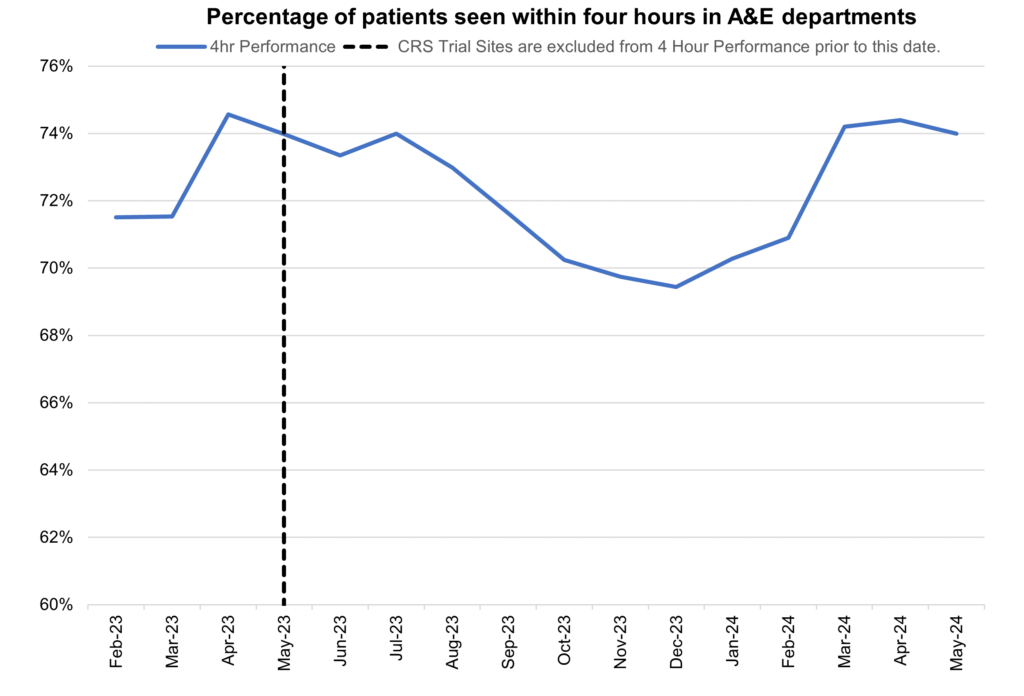
In May, 10.1% of patients spent 12 hours from arrival in A&E. This is down from 10.2% last month.
Ambulance services answered 813,631 calls to 999, or 26,246 per day, an increase of 5% compared to May 2023. There were 381,432 incidents where a patient was conveyed to A&E, 3% more than in May 2023.
The average ambulance response time for a category 2 call was 32 minutes and 44 seconds which is comparable to May 2023.
Average C2 response times, England
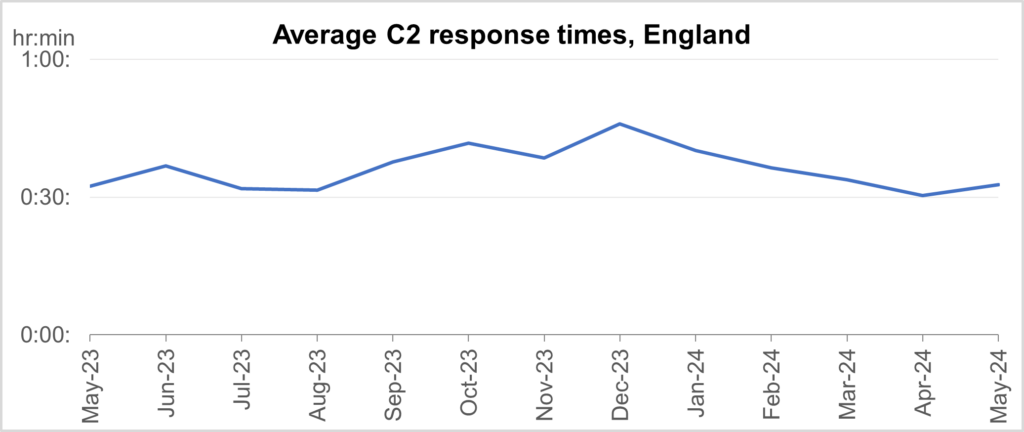
NHS 111 received 1.7 million calls (c. 58.1 thousand per day) in April. Demand was 9.5% down year on year and 13.4% below volumes received in March 2024.
The proportion of calls abandoned dropped 4.5% percentage points from the previous month (now at 6.1%) and the average speed to answer reduced by 93 seconds to 103.
NHS 111 calls received and proportion of calls abandoned
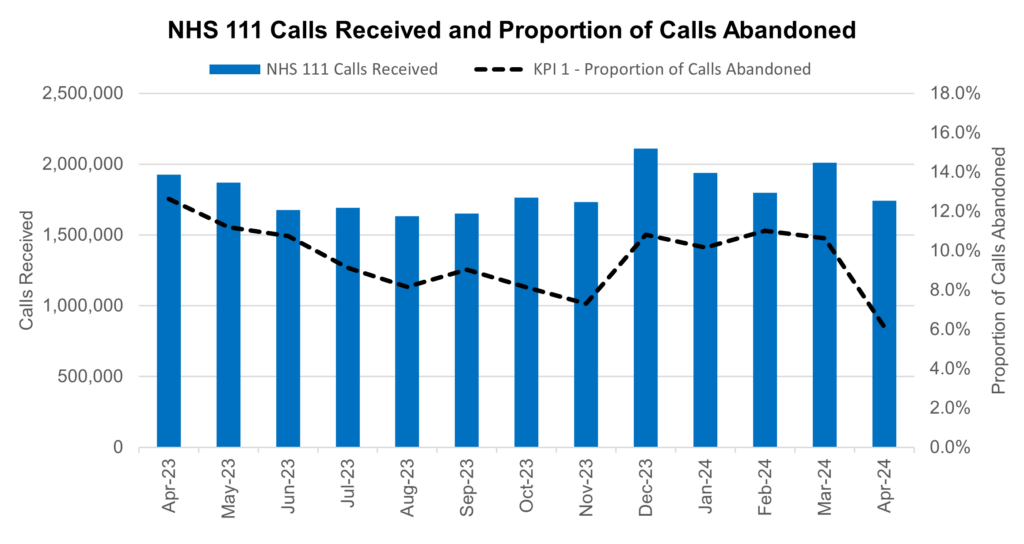
Elective recovery
There was a reduction in some of the longest waits for care. 5,013 patients were waiting more than 78 weeks for treatment at the end of April, down from 11,446 in April 2023 (56%). Additional management data1 suggests this number reduced between April and May, with 4,683 patients waiting more than 78 weeks for treatment as of the end of May.
Referral to treatment 78 week waits
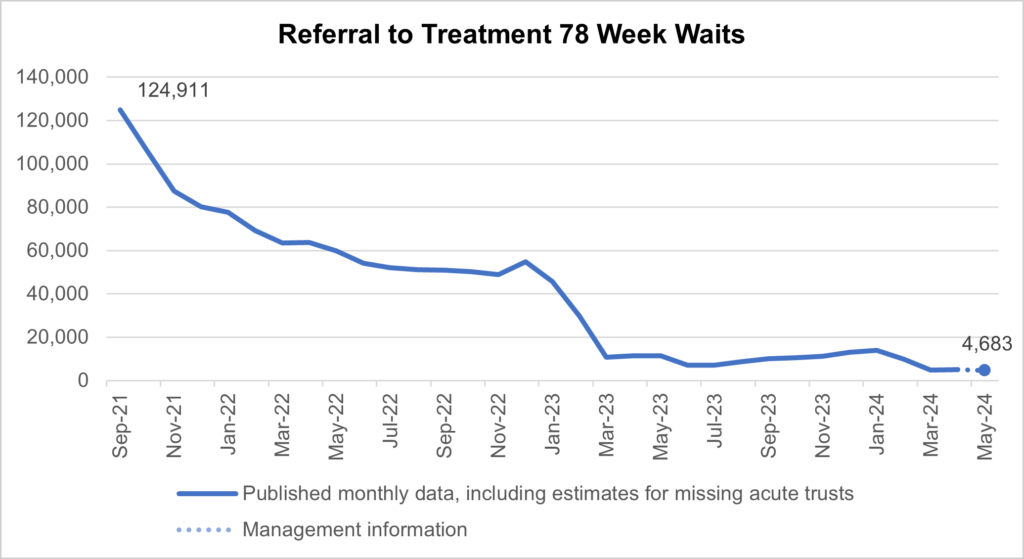
The number of patients waiting more than 65 weeks for treatment was 50,397 at the end of April. This is down from 95,135 in April 2023. Additional management data shows 56,401 patients waiting more than 65 weeks for treatment as of the end of May.
Referral to treatment 65 week waits
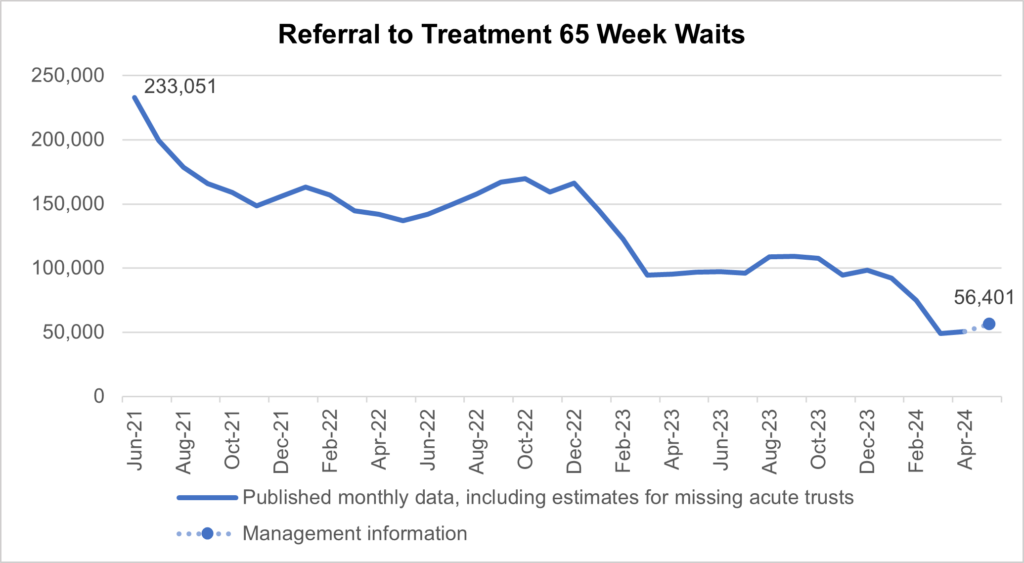
As of the end of April there were 7.6 million waits for procedures and appointments and an estimated 6.3 million people waiting for care.
Cancer
Levels of Urgent Suspected Cancer referrals saw 12,209 patients seen per working day. Treatment activity saw 1,419 patients starting Cancer Treatment per working day.
Urgent suspected cancer referrals first seen
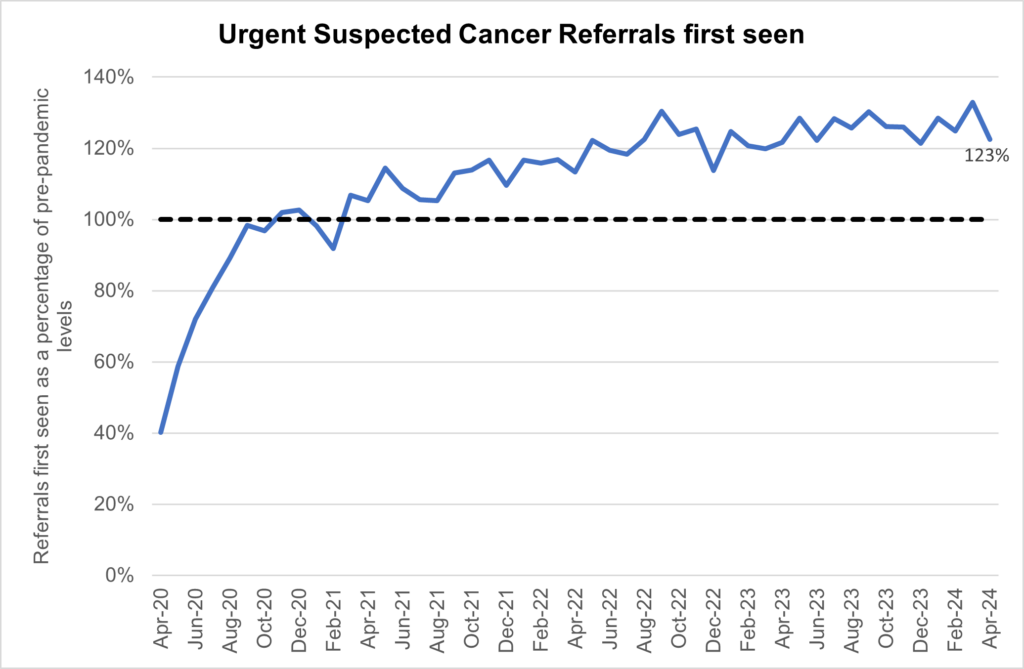
Almost 340,000 people received their first treatment for cancer over the last year between May 2023 and April 2024 –up by around 7,000 on the same the year before.
The NHS is diagnosing a higher proportion of cancers at an early stage – about 2 percentage points higher than before the pandemic.
Cancer early diagnosis rate across England
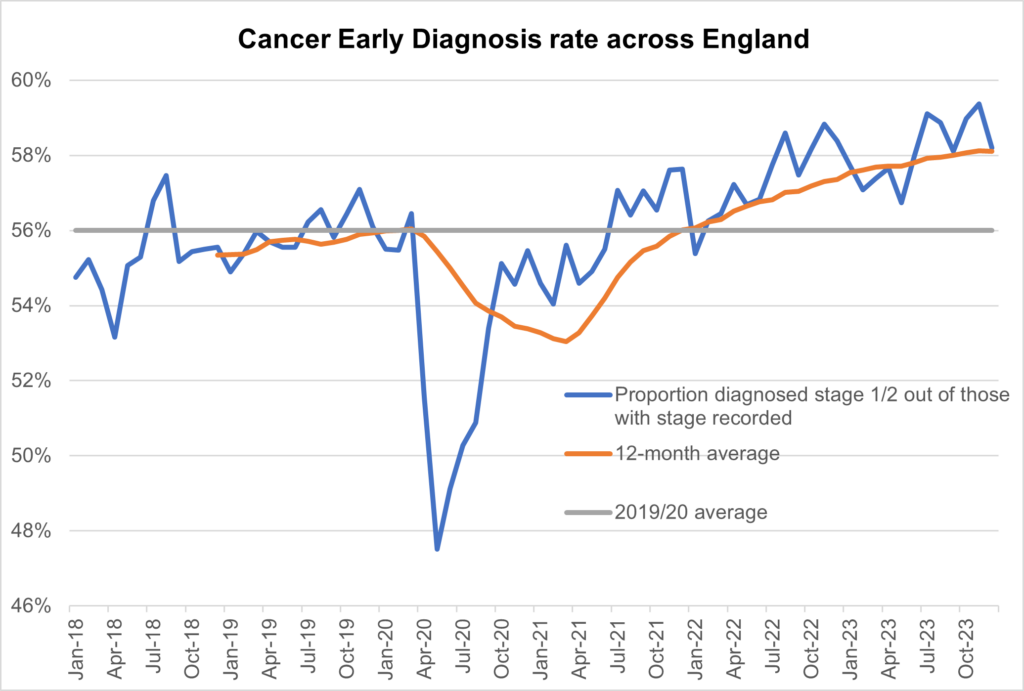
Performance against the Faster Diagnosis Standard in April was 73.5%, which is an increase of 2.2% compared to the same point last year. The NHS is now planning to raise this standard to 80% in March 2026.
Faster diagnosis standard performance across England
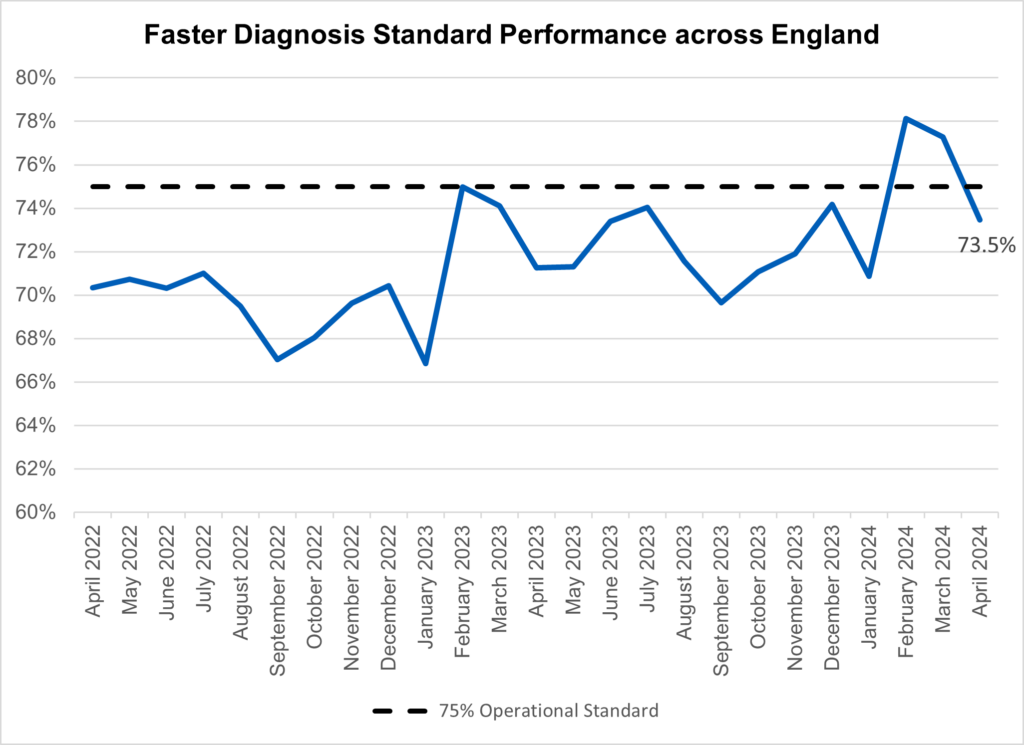
In April, performance against the 62 day combined Urgent Referral to First Treatment 62 day Standard increased to 66.6%, which was 1.7% higher than at the same point last year.
62 day urgent referral to first treatment performance across England
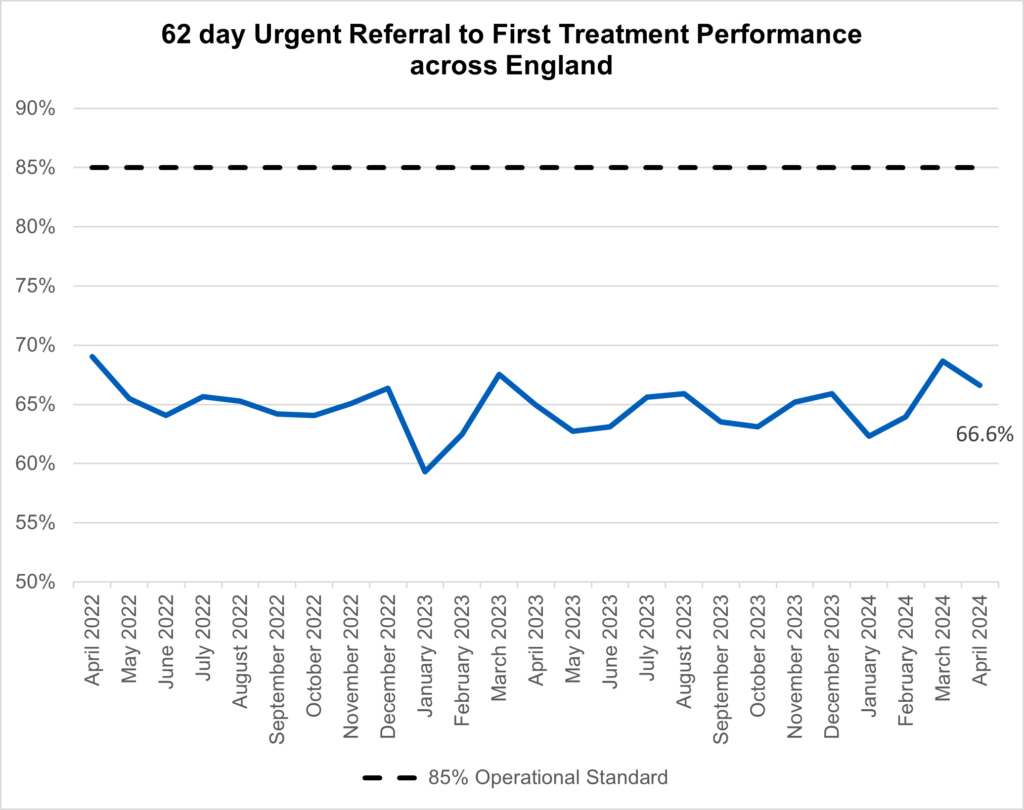
Learning disability annual health checks
People with a learning disability experience significant health inequalities.
Annual health checks and the health action plans that accompany them are important ways that the NHS can support the health of people with a learning disability. They are designed to help people with a learning disability to manage their physical and mental health, to improve access to health screening, and to identify health conditions early so that people can get timely care and treatment.
In 2023/24, the NHS achieved the Long Term Plan ambition that at least 75% of people aged 14 and over on a GP learning disability register will receive an annual health check. 77.6% of people on the register received an annual health check and 75.0% of them also received an accompanying health action plan. This compares to 78.1% completed annual health checks and 74.6% accompanying health action plans at the end of March 2023.
By the end of March 2024, the number of patients aged 14 years and over with completed health checks increased by 5.2% since March 2023 meaning that more people are now receiving a learning disability annual health check. The number of patients on a GP learning disability register has also increased in the same period by 5.9%.

